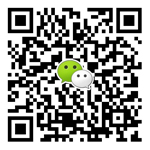How Chinese Teaching Methods Accelerate Western Exam Success
Shang Kun 2025-05-16 140
How Chinese Teaching Methods Accelerate Western Exam SuccessIn recent years, the global education landscape has seen a surge in interest surrounding Chinese teaching methods. With their focus on discipline, strategic thinking, and memorization, these methods have begun to make waves in the West, particularly in the context of academic exams. Western students, who are often accustomed to more flexible, creative teaching styles, are finding that integrating Chinese methodologies into their study routines can result in remarkable improvements. However, as with any new approach, there are some challenges that need addressing to fully unlock their potential.
Imagine this: A Western student struggling to balance the demands of multiple exams, overwhelmed by the need to absorb vast amounts of information in a short time. The traditional Western approach of problem-solving and critical thinking, though highly effective in many areas, often leaves gaps when it comes to rote learning and exam performance. The pressure of time limits in exams can turn even the most brilliant students into anxious test-takers. Enter the Chinese teaching method, with its focus on structured practice and disciplined memorization, offering a clear pathway to success. But could this more rigid approach really be the solution?

Many Western students initially find the idea of memorizing long lists of facts or following a strict routine somewhat stifling. After all, critical thinking and creativity are highly valued in their education system. So, the question arises: how can Chinese teaching methods, which emphasize repetition and rote learning, enhance the flexibility and creative problem-solving skills that Western students hold dear? The answer lies in the combination of both worlds, blending rigorous discipline with creative strategies to provide a more holistic approach to exam preparation.
Chinese methods are often rooted in repetition, which allows students to engrain information deeply in their minds. For example, students practicing math or vocabulary often complete hundreds of problems or write out characters repeatedly until they become second nature. This process not only solidifies memory but also enhances speed and accuracy, two essential skills in high-pressure exam situations. But there’s more. Beyond rote memorization, Chinese teaching also places great importance on time management, fostering a strong sense of discipline in students.
Not only does this method emphasize the importance of diligent practice, but it also teaches students to manage their time effectively—a crucial skill in any exam scenario. The method of setting specific study times and ensuring consistency helps students avoid the stress that comes with last-minute cramming. And it doesn’t stop there; the integration of exam simulation exercises within Chinese teaching methods further conditions students to think and act under pressure, increasing both their confidence and performance on actual exams.
Even more importantly, the rise of Chinese educational methods in the West doesn't require a complete overhaul of existing systems. By selectively integrating aspects like memorization techniques, time management, and self-discipline, Western students can take advantage of these proven strategies without losing their individual creativity or critical thinking skills. The key is balance. It’s not about replacing one approach with another, but rather about enhancing the strengths of both. This hybrid approach can yield faster and more sustainable academic results.
In conclusion, the fusion of Chinese teaching methods with Western exam techniques offers a promising solution for students seeking to excel in highly competitive academic environments. By incorporating aspects of rote learning, disciplined practice, and time management, students can sharpen their ability to perform under pressure, all while maintaining their creative edge. As the boundaries between educational systems continue to blur, it’s clear that the strategic adoption of these techniques could be the key to unlocking greater academic success across the globe. So, why not consider blending these methods into your own study routine? After all, success in exams is not just about what you know, but how effectively you can apply it under pressure.
